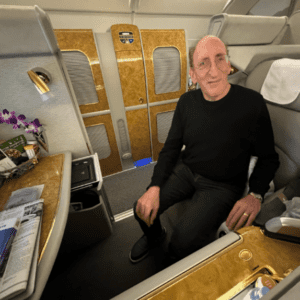 At the present, many hotels around the world are under intense pressure for profits. No single factor can account for this, but the broad response has been a tightening of budgets as well as a proliferation of new brands with a focus on lifestyle to target the emerging millennial audience.
At the present, many hotels around the world are under intense pressure for profits. No single factor can account for this, but the broad response has been a tightening of budgets as well as a proliferation of new brands with a focus on lifestyle to target the emerging millennial audience.
While it’s laudable to see a bolstering of the full-service spectrum of hospitality, this move lacks strategic substance because it fails to address the two key considerations of most hotel purchases – location and price. Instead, we are going to witness a depletion of hotels in mid-tiers with luxury properties thriving on emotional drivers and true branding while all others slowly shift towards a no-frills model.
Echoing the airlines
The airlines faced a similar situation several decades ago. For those old enough to remember, mainstream airlines were rocked by upstart no-frills carriers such as Southwest Airlines that found an underserviced niche. By eliminating food services, built-in checked baggage charges and guaranteed seating assignments as well as through narrowing seat pitch and reducing legroom, these novel-at-the-time discount airlines were able to pass considerable savings on to their customers.
The focus was on conveying the lowest possible price to consumers at the start of the sales process with everything nonessential tacked on extra in an a la carte fashion. The model was an astonishing success as there was clearly a market for passengers who simply wanted to get from A to B in as a hassle-free a manner as possible. For many cases, coach travelers were more than prepared to put up with a non-negligible level of discomfort for substantial cost savings.
Thus, the airline industry bifurcated: first class with exorbitantly high prices and almost no discounts, and economy class where price was a yield affair. It was no-frills even before the verbiage of ‘no frills’ existed. (For reference, the trending category name is ‘low cost carrier’.)
Typically only representing less than 10% of total seat capacity depending on the aircraft configuration, the bigwigs in the front of the plane certainly got what they paid for – better seating, full F&B and dedicated service. For all of us plebs in coach, though, the new value proposition for loyalty to one carrier or another was translated into smaller check-in lines, preferred seat access during advanced bookings, a deferral of baggage fees and, obviously, points accumulation.
Nowadays, the average cloud warrior is used to this model, blindly accepting it as the norm. Even in the midst of my sexagenarian golden years, I am still a bit too young to fully recall Eastern Airlines or Wardair’s exemplary coach service where complimentary champagne greeted you and fine bone china plates were an expectation at meal time. It should also be noted that both of these airlines did not survive the 1980s.
Monkey in the Middle
Remember the childhood game called Monkey in the Middle where two or more players passed a ball to one another while a player in the center attempts to intercept it?
Like the airlines, the middle ground in the hotel marketplace is rapidly evaporating. Those steering their product into the center of this segmented battleground will soon find that the revenue ‘ball’ will never touch their hands. Conversely, those operators who play to the extremes – the low cost carrier game as well as those top price providers – will both succeed with their respective target markets.
What does this mean for you as a lone hotelier too swamped in daily work to ponder strategic issues like this and likely not high enough in the corporate chain of command to make any sweeping changes?
If you are manager at a limited-service property – branded or not – you are in the right spot. Similar to the evolution of the airline industry, your business will increasingly morph into a yield game, with the objective being occupancy (in the airline business this is called ‘load factor’). Loyalty is fleeting, as customers have limited interest in finding out who you are nor do they have the time either. The buying decision will be based almost exclusively upon your location and whatever base rate you advertise.
Opposite to this is the luxury side of the spectrum where your primary focus is rate with occupancy secondary. At this end, you will find yourself in the ‘real’ hospitality business – exceptional services, facilities and amenities will actually drive sales and enhance loyalty. There will always be some elasticity relative to the competitive set, but unlike the ‘coach’ customer, no one is going to balk over a ten percent (or more) price differential. There are too many other emotional elements to factor into the purchase decision.
The premium segment will thus continue to focus on a value equation that considers price and location, but unique brand qualities will become the primary point of differentiation for the target audience. What do you do better than everyone else? What do you do that cannot be replicated anywhere else in the world? What experiences will your guests take away? While the urban ultra-luxury hotel set offers a good example of this, many resorts will follow this sort of model as well. Resort customers typically spend more time on property – sometimes all of their time onsite – and as such they will be more attuned to differentiated product attributes.
Conclusion
To return to my opening statement about the eventual failure of lifestyle sub-brands, the airlines offer a clear case of how the value customer is less interested in perceptual or fringe add-ons. They want to stay at a place that is as close as possible to their primary purpose of travel for as little cash as possible. And these ‘coach’ guests are hardly a tiny demographic – it’s quite the opposite! Unless the differentiators are sufficient to push a product into the premium segment where emotion plays a dominant role, any new brand introduction is simply another monkey into the middle of our hospitality menagerie.
About the author
One of the world’s most published writers in hospitality, Larry Mogelonsky is the owner of Hotel Mogel Consulting Limited and founder of LMA Communications Inc., an award-winning marketing agency based in Toronto. His experience encompasses hotel properties around the world, both branded and independent, and ranging from luxury and boutique to select-service. Larry is also a principal of Cayuga Hospitality Consultants and is on several boards for companies focused on hotel technology. His work includes three books “Are You an Ostrich or a Llama?” (2012), “Llamas Rule” (2013) and “Hotel Llama” (2015). You can reach Larry at larry@lma.ca to discuss hotel business challenges or to book speaking engagements.




















